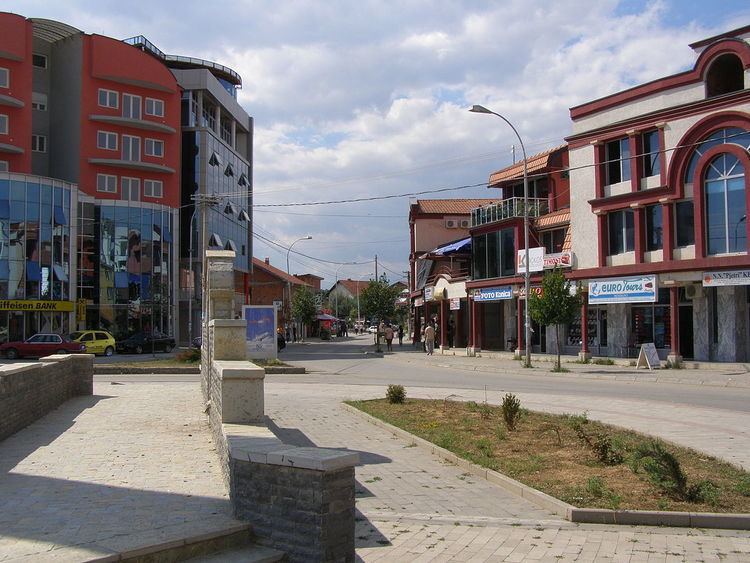Time zone CET (UTC+1) Website kk.rks-gov.net/kline Elevation 382 m Population 39,527 (2014) | District District of Peć Car plates 03 Area 309 km² Postal code 32000 Area code +381 | |
 | ||
Weather 5°C, Wind NW at 3 km/h, 81% Humidity | ||
Klina or Klinë (Albanian: Klina or Klinë; Serbian: Клина, Klina) is a city and municipality in the Peć district of north-western Kosovo. It is located at the confluence of the river Klina into the White Drin.
Contents
Map of Klin%C3%AB
History
Klina is shown to be inhabited since ancient times. First mentioning comes from Ptolemy which mentions Chinna, residing close to Narona and 12 miles from Shkodër, both listed as part of Dalmatia. Newer sources mention it populated by the Illyrian tribe of Dardani. There are also sources who place the hypotheses of a Celtic settlement in Illyricum, and a possible Celtic explanation of the name. During Early Middle Ages, Porphyrogenitus mentions the urban center of Desstinik, today Dersnik/Drsnik, where important archeological discoveries of Roman period were made in August 2013, described as: ...the most important discovery of the past few decades to have been made in Kosovo in the area of archaeology.
Symbol
A symbol of Klina are the Mirusha Waterfalls.
Demographics
In September 2014, 12 Egyptian families returned to Klina having spent the last 15 years displaced in Podgorica, Montenegro. The families moved straight into a newly constructed neighbourhood as part of project helping refugees from the Kosovo War return to Kosovo.
